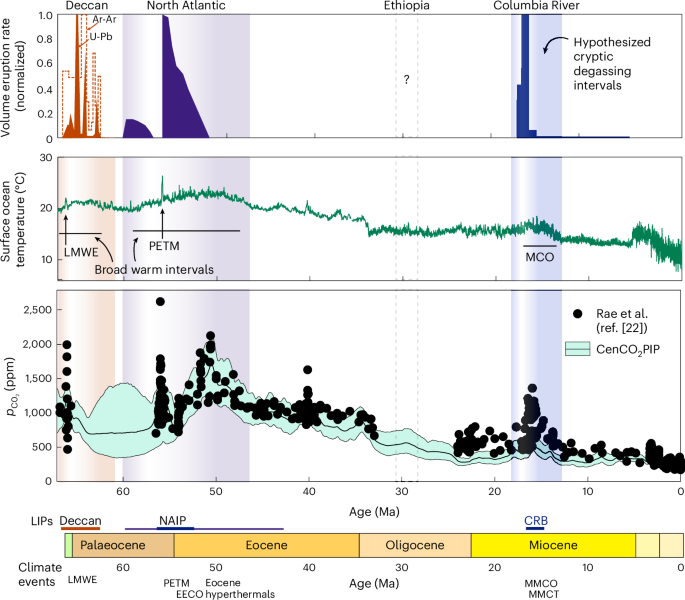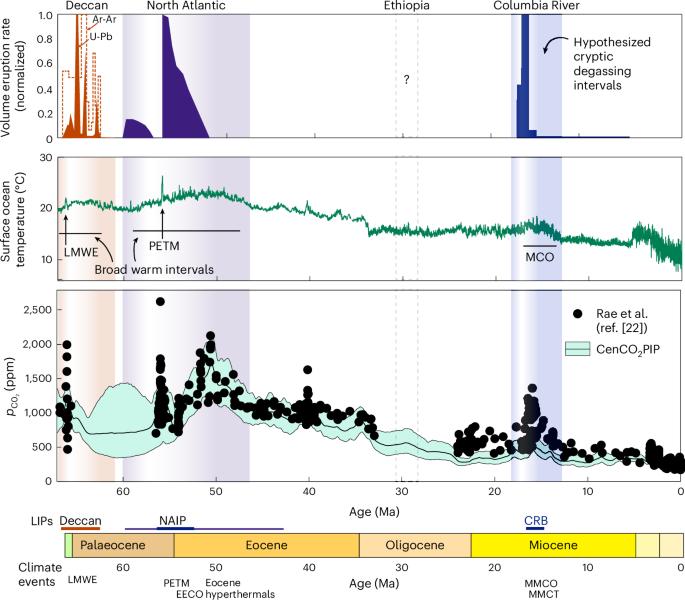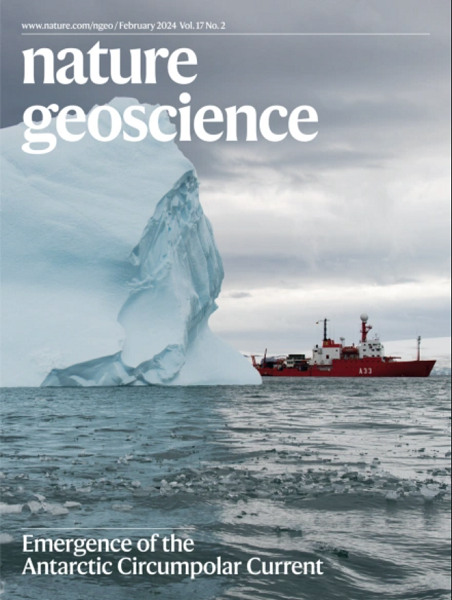Cryptic degassing and protracted greenhouse climates after flood basalt events
IF 15.7
1区 地球科学
Q1 GEOSCIENCES, MULTIDISCIPLINARY
引用次数: 0
Abstract
Large igneous provinces erupt highly reactive, predominantly basaltic lavas onto Earth’s surface, which should boost the weathering flux leading to long-term CO2 drawdown and cooling following cessation of volcanism. However, throughout Earth’s geological history, the aftermaths of multiple Phanerozoic large igneous provinces are marked by unexpectedly protracted climatic warming and delayed biotic recovery lasting millions of years beyond the most voluminous phases of extrusive volcanism. Here we conduct geodynamic modelling of mantle melting and thermomechanical modelling of magma transport to show that rheologic feedbacks in the crust can throttle eruption rates despite continued melt generation and CO2 supply. Our results demonstrate how the mantle-derived flux of CO2 to the atmosphere during large igneous provinces can decouple from rates of surface volcanism, representing an important flux driving long-term climate. Climate–biogeochemical modelling spanning intervals with temporally calibrated palaeoclimate data further shows how accounting for this non-eruptive cryptic CO2 can help reconcile the life cycle of large igneous provinces with climate disruption and recovery during the Permian–Triassic, Mid-Miocene and other critical moments in Earth’s climate history. These findings underscore the key role that outgassing from intrusive magmas plays in modulating our planet’s surface environment. Cryptic degassing, whereby mantle-derived CO2 fluxes continue after surface eruptions slow, can explain prolonged warming that followed some large igneous province events, according to geodynamic and climate modelling.


洪水玄武岩事件后的隐秘脱气和持久温室气候
大型火成岩带在地球表面喷发出高活性、以玄武岩为主的熔岩,这应该会促进风化通量,导致火山活动停止后二氧化碳的长期减少和冷却。然而,在整个地球地质历史中,多个新生代大型火成岩带的后遗症都表现为出乎意料的长期气候变暖和生物恢复延迟,持续时间超过了火山喷发最旺盛阶段的数百万年。在这里,我们对地幔熔化进行了地球动力学建模,并对岩浆运移进行了热力学建模,结果表明,尽管有持续的熔体生成和二氧化碳供应,地壳中的流变反馈仍会抑制火山喷发率。我们的研究结果表明,在大型火成矿床过程中,地幔向大气提供的二氧化碳通量如何与地表火山喷发率脱钩,成为驱动长期气候的重要通量。跨越时间校准古气候数据区间的气候-生物地球化学建模进一步表明,考虑这种非爆发性的隐性二氧化碳如何有助于协调大型火成岩带的生命周期与二叠纪-三叠纪、中新世中期和地球气候史上其他关键时期的气候破坏和恢复之间的关系。这些发现强调了侵入岩浆的排气在调节地球表面环境中的关键作用。
本文章由计算机程序翻译,如有差异,请以英文原文为准。
求助全文
约1分钟内获得全文
求助全文
来源期刊

Nature Geoscience
地学-地球科学综合
CiteScore
26.70
自引率
1.60%
发文量
187
审稿时长
3.3 months
期刊介绍:
Nature Geoscience is a monthly interdisciplinary journal that gathers top-tier research spanning Earth Sciences and related fields.
The journal covers all geoscience disciplines, including fieldwork, modeling, and theoretical studies.
Topics include atmospheric science, biogeochemistry, climate science, geobiology, geochemistry, geoinformatics, remote sensing, geology, geomagnetism, paleomagnetism, geomorphology, geophysics, glaciology, hydrology, limnology, mineralogy, oceanography, paleontology, paleoclimatology, paleoceanography, petrology, planetary science, seismology, space physics, tectonics, and volcanology.
Nature Geoscience upholds its commitment to publishing significant, high-quality Earth Sciences research through fair, rapid, and rigorous peer review, overseen by a team of full-time professional editors.
 求助内容:
求助内容: 应助结果提醒方式:
应助结果提醒方式:


